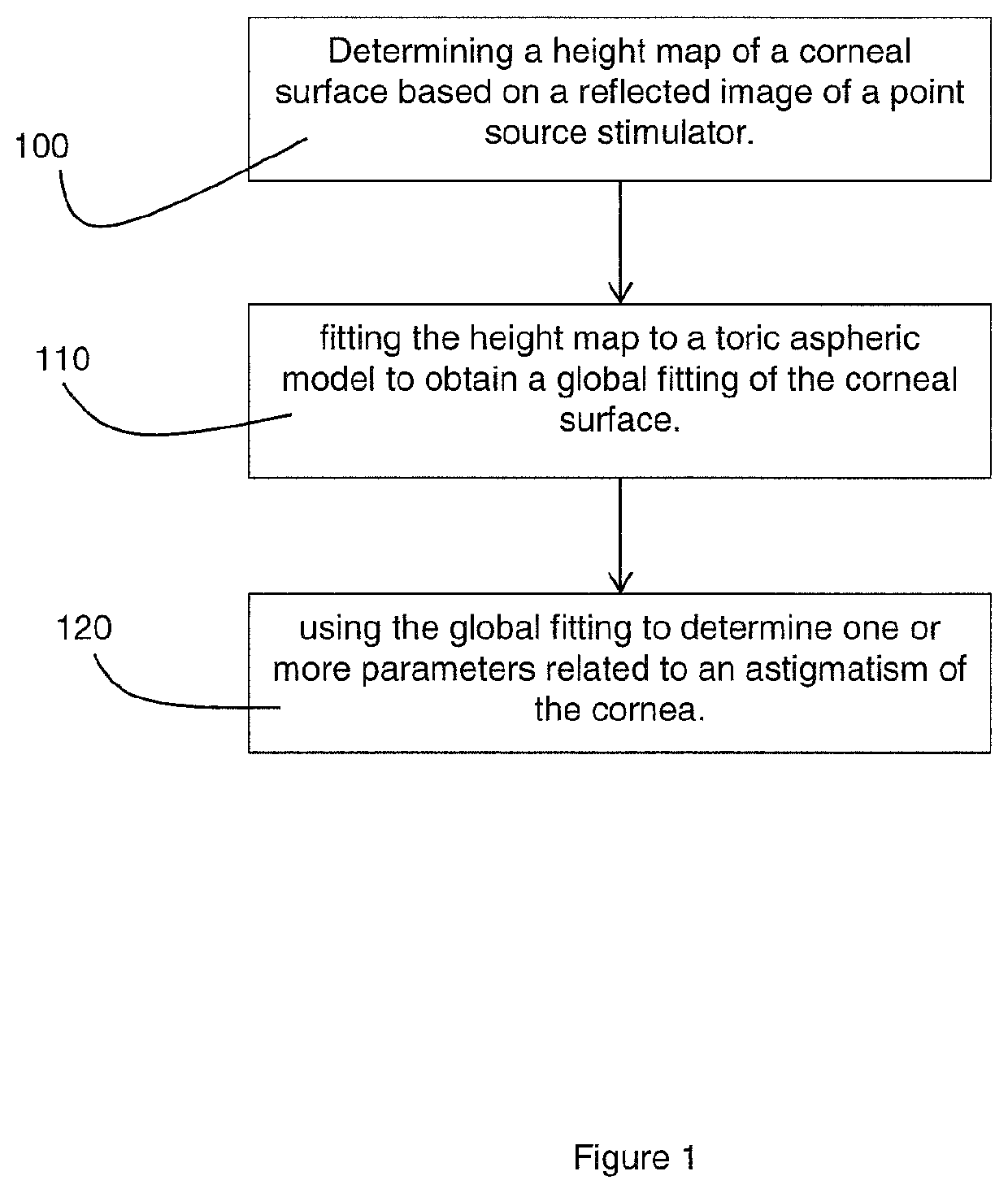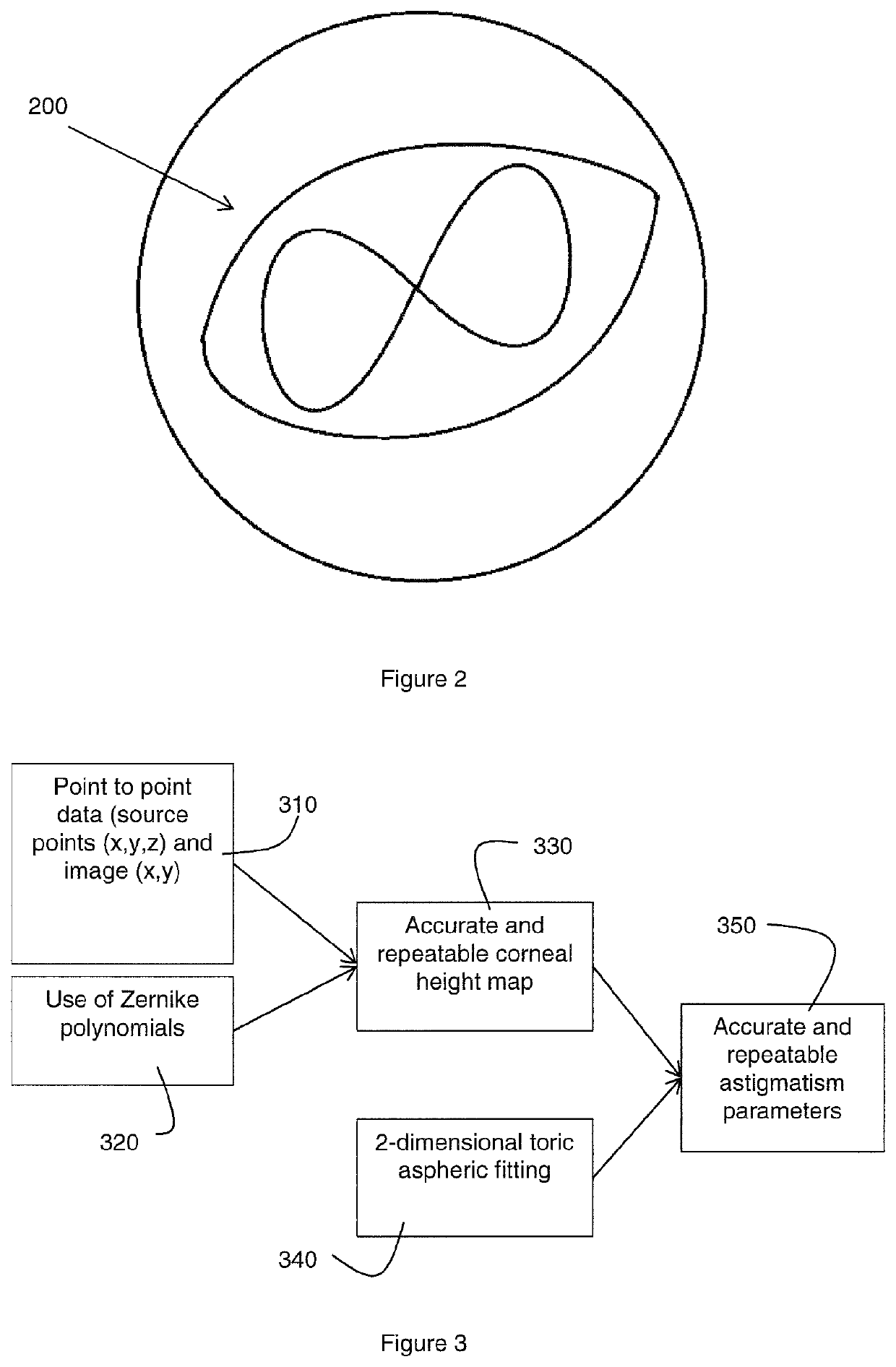Determining global shape parameters of a cornea using a two-fold fitting from measurement data to an aspheric toric surface model
a technology of aspheric toric surface and global shape parameters, which is applied in the field of determining global shape parameters of the cornea using a two-fold fitting from measurement data to an aspheric toric surface model, can solve the problem of reducing repeatability cos
- Summary
- Abstract
- Description
- Claims
- Application Information
AI Technical Summary
Benefits of technology
Problems solved by technology
Method used
Image
Examples
Embodiment Construction
[0045]FIG. 1 schematically shows a flow chart of an embodiment of the method according to the present invention. The method as shown comprises a first step 100 of determining a height map representing a corneal surface. In accordance with the present invention, the height map is established based on measurement data obtained by illuminating a corneal surface with a stimulator source that comprises point sources, also referred to as a point source stimulator. Within the present invention, the feature ‘point source’ is used to denote a light source providing a comparatively small, point-like source of illumination, in contrast to e.g. Placido rings having an area-type of illumination. In a preferred embodiment, the height map is derived by performing a surface fitting using a set of global functions such as Zernike polynomials, Fourier series or spline functions.
[0046]Using point-like illumination sources enables to provide a more accurate determination of the corneal surface as repre...
PUM
 Login to View More
Login to View More Abstract
Description
Claims
Application Information
 Login to View More
Login to View More - R&D
- Intellectual Property
- Life Sciences
- Materials
- Tech Scout
- Unparalleled Data Quality
- Higher Quality Content
- 60% Fewer Hallucinations
Browse by: Latest US Patents, China's latest patents, Technical Efficacy Thesaurus, Application Domain, Technology Topic, Popular Technical Reports.
© 2025 PatSnap. All rights reserved.Legal|Privacy policy|Modern Slavery Act Transparency Statement|Sitemap|About US| Contact US: help@patsnap.com



